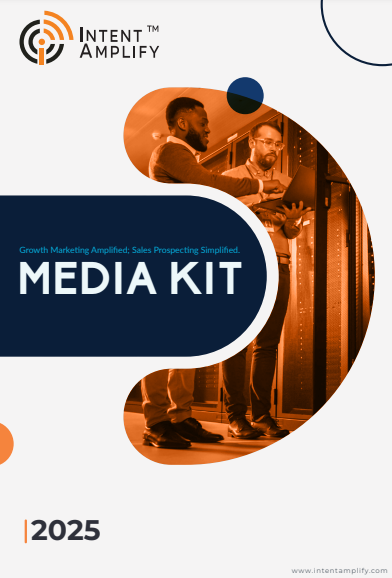
Answer Engine Optimization (AEO): Capturing B2B Buyers via Conversational Search
- Last updated on: October 17, 2025
B2B buyers today don’t search like they used to. Instead of typing short, generic keywords, they ask full questions. The kind you’d ask a colleague or even a chatbot. “What’s the best cloud platform for hybrid enterprises?” or “How can I improve lead quality with AI automation?” These aren’t random queries; they’re natural, conversational, and deeply intent-driven. That’s exactly where Answer Engine Optimization (AEO) comes in.
It’s not about ranking for keywords anymore. It’s about being the answer. As voice assistants, chatbots, and AI-driven search tools like Google’s SGE or Bing Copilot shape how professionals discover insights, AEO helps brands position their content where decisions begin, inside the answer box.
What Is Answer Engine Optimization (AEO)?
Answer Engine Optimization (AEO) is the process of optimizing content so that search engines, voice assistants, and AI models can extract it as a direct, trustworthy answer to user questions.
Unlike traditional SEO, which aims to rank web pages, AEO aims to make your content the source for answers. Instead of competing for a position on a long list of blue links, you’re competing to become the voice or summary result users actually read or hear. Think of how Google now provides AI summaries or how OpenAI’s ChatGPT pulls responses directly from relevant, well-structured sources. AEO ensures your brand’s content fits naturally into those AI-generated explanations, clear, authoritative, and conversational.
Why AEO Matters for B2B Marketing in 2025
The Rise of Conversational Search
B2B professionals increasingly use natural language in searches. According to a 2024 Gartner report, over 30% of B2B research queries are now conversational, often in the form of questions. That number is expected to grow as generative AI assistants become a daily part of enterprise workflows.
For marketers, this means optimizing not for keywords like “best CRM,” but for questions like “Which CRM improves data accuracy for distributed teams?” The more naturally your content answers these questions, the more likely it is to surface in AI-powered responses.
Higher Intent, Faster Conversions
AEO-based searches often come from buyers who already know their pain points. They’re not casually browsing; they’re asking specific questions that signal purchase intent.
For instance, a query like “What’s the best data protection tool for hybrid cloud environments?” indicates someone closer to the decision stage. AEO ensures your content addresses such intent-rich queries, helping nurture leads faster through automation systems and CRM workflows.
Low Competition, High Credibility
While SEO has become saturated, AEO remains underutilized, especially in B2B. Few companies have optimized their content for conversational search.
This early-stage advantage gives proactive marketers room to capture high-value visibility with relatively little competition. Being featured in AI-driven summaries, snippets, or voice responses builds authority faster than conventional keyword ranking. When buyers repeatedly see your brand providing clear answers, trust follows naturally.
Alignment with AI-Powered Search
Search is no longer static; it’s predictive, contextual, and increasingly AI-driven. ChatGPT, Perplexity, and Google’s SGE (Search Generative Experience) rely on conversational context rather than pure keyword density.
AEO aligns directly with this evolution. Structuring content with clarity, direct answers, and semantic depth helps AI systems recognize it as the most relevant response. It’s not about outsmarting algorithms, it’s about being genuinely helpful and well-organized.
How Answer Engine Optimization Works
Identify Natural Language Queries
The foundation of AEO is understanding how your buyers ask. Monitor customer service chats, internal FAQs, or voice queries from your website search bar.
Buyers rarely use robotic phrasing. Instead of “CRM data quality tools,” they might say “how to clean CRM data automatically.” Those natural questions are your AEO goldmine.
Provide Clear, Direct Answers
Once you identify the right questions, answer them clearly and concisely, ideally in two or three sentences, before diving deeper.
For example:
Instead of:“CRM tools are essential for managing business relationships and data efficiently across multiple departments.”
Try:
“A CRM system helps businesses organize customer data and automate workflows so teams can manage relationships more effectively.”
The difference? The latter feels conversational and gets straight to the point.
Use Schema and Structured Data
While AEO isn’t purely technical, structured data (like FAQ and HowTo schema) helps search engines identify which parts of your content answer questions directly.
Adding schema doesn’t just improve SEO visibility; it ensures your content is recognized as a verified, machine-readable answer, improving chances of being featured in snippets or AI results.
Write for People, Not Bots
Answer engines are trained on human language, not corporate jargon. Content should sound like a conversation with a professional peer, not a sales pitch.
Instead of writing:
“Our enterprise-grade SaaS platform provides superior omnichannel synergy for optimized CX delivery.”
Say:
“Our SaaS platform helps marketing teams connect campaigns, track results, and create better customer experiences.”
Clarity builds comprehension. Comprehension builds trust.
How AEO Impacts the B2B Buyer Journey
B2B buyers now rely on search to make decisions independently. AEO places your content at critical touchpoints of that journey:
- Awareness: Your brand answers early-stage research questions, building visibility before the competition even appears.
- Consideration: When buyers evaluate options, clear and credible answers position your brand as the authority.
- Decision: As AI tools summarize and recommend, your content stands a better chance of being cited or featured as the “source.”
For example, a cybersecurity firm explaining “how zero trust improves remote workforce security” might appear directly in an AI-generated response, a level of visibility even paid ads can’t guarantee.
Practical AEO Strategies for B2B Companies
Build a Conversational FAQ Library
Compile genuine buyer questions from real interactions, sales calls, webinars, and community forums. Each FAQ should start with a natural question (“How can marketing teams use AI for personalization?”) followed by a short, direct answer.
These FAQs can be repurposed into blog posts, videos, or chatbot responses, expanding your presence across multiple touchpoints.
Optimize for Featured Snippets and AI Answers
Structure your paragraphs with short, complete sentences that summarize ideas upfront. Avoid fluff or filler intros.
Example:
Instead of burying key insights midway through, start strong:“Answer Engine Optimization (AEO) helps your content appear in AI and voice-based search results by delivering precise, well-structured responses.”
Adapt to Voice Search Patterns
Voice queries in B2B often sound like real speech. Instead of optimizing for “marketing automation software,” think “What marketing automation tools work best for B2B lead generation?”
These conversational formats match how executives and marketers interact with assistants like Siri, Alexa, or Copilot during quick research moments.
Track AEO Performance
Traditional metrics like clicks or rank are less useful here. Track instead:
- Featured snippet appearances
- Zero-click impressions
- AI summary mentions
- Increase in branded queries
These signals reveal whether your content is recognized as authoritative enough for AI-based extraction.
The Future of AEO in B2B Search
The next few years will fundamentally change how B2B buyers find and trust information. By 2026, most enterprise search interactions won’t start with Google alone. They’ll begin inside AI-driven ecosystems like ChatGPT, Gemini, Copilot, or company-owned virtual assistants. Instead of a page full of links, buyers will see, or hear, one clear, summarized answer.
This shift transforms the entire purpose of optimization. Ranking for traffic will no longer be the priority. Instead, earning recognition as a trusted, cited source becomes the new success metric. AEO is the bridge between today’s keyword-based SEO and tomorrow’s intent-based, conversational discovery. AI-driven search models rely on structured, contextually rich, and semantically clear content to generate accurate responses. They prioritize information that answers questions directly, eliminates ambiguity, and maintains factual consistency. That’s precisely what AEO trains your content to do.
For B2B marketers, this creates both challenge and opportunity:
Challenge: The traditional SEO playbook, keywords, backlinks, and ranking signals won’t be enough to stay visible. AI will summarize, synthesize, and attribute.
Opportunity: If your content consistently provides high-quality, verifiable answers, AI systems will repeatedly pull and cite it, giving your brand ongoing exposure, even without a single click.
We’re entering an age where authority is algorithmic. A brand that answers hundreds of buyer-relevant questions transparently and accurately will carry more weight across all search interfaces, web, voice, chat, and embedded AI systems..
Conclusion
Answer Engine Optimization (AEO) isn’t just another marketing acronym. It’s the evolution of SEO for an age where search feels like conversation. It’s about providing clarity, credibility, and context, three qualities every decision-maker values.
The future of B2B visibility belongs to those who can answer, not just advertise. And as search engines turn into intelligent assistants, the best strategy is simple: write content that genuinely helps. Because if your content gives the best answer, everything else follows.
FAQs
1. What is the main goal of Answer Engine Optimization (AEO)?
AEO focuses on making your content the preferred source for AI and voice-based answers, not just search rankings.
2. How is AEO different from traditional SEO in B2B marketing?
SEO ranks pages. AEO ranks answers. It’s about being featured in conversational or AI-driven summaries.
3. Does AEO apply only to written content?
No. It applies to all forms of content, blogs, videos, FAQs, and even structured data that AI tools can interpret.
4. What are the first steps to implement AEO?
Identify common buyer questions, answer them clearly, and use structured data to make your responses easy to extract.
5. How does AEO help brands appear in AI-generated responses?
By providing concise, trustworthy information that AI models recognize as contextually accurate and relevant.



